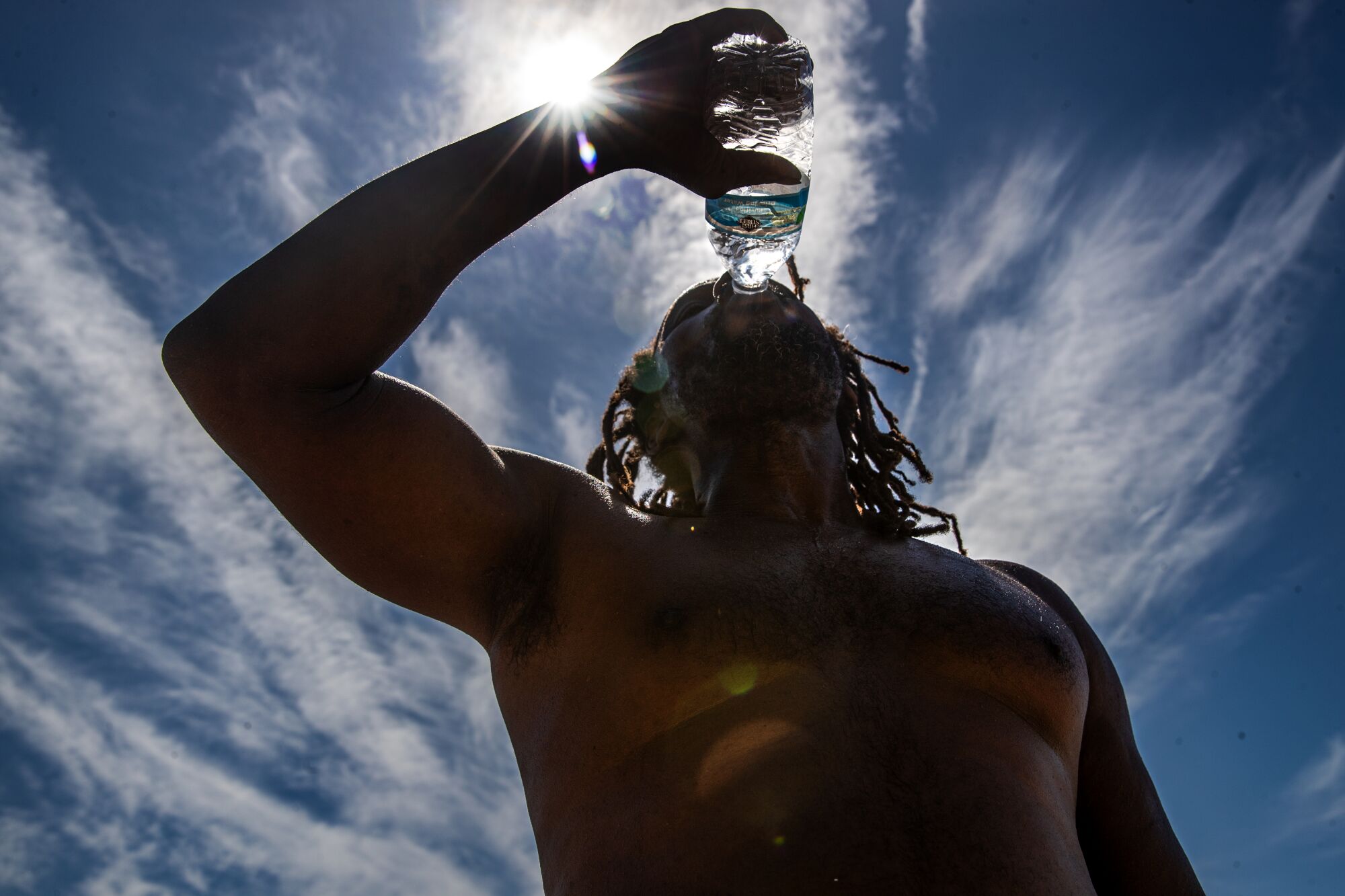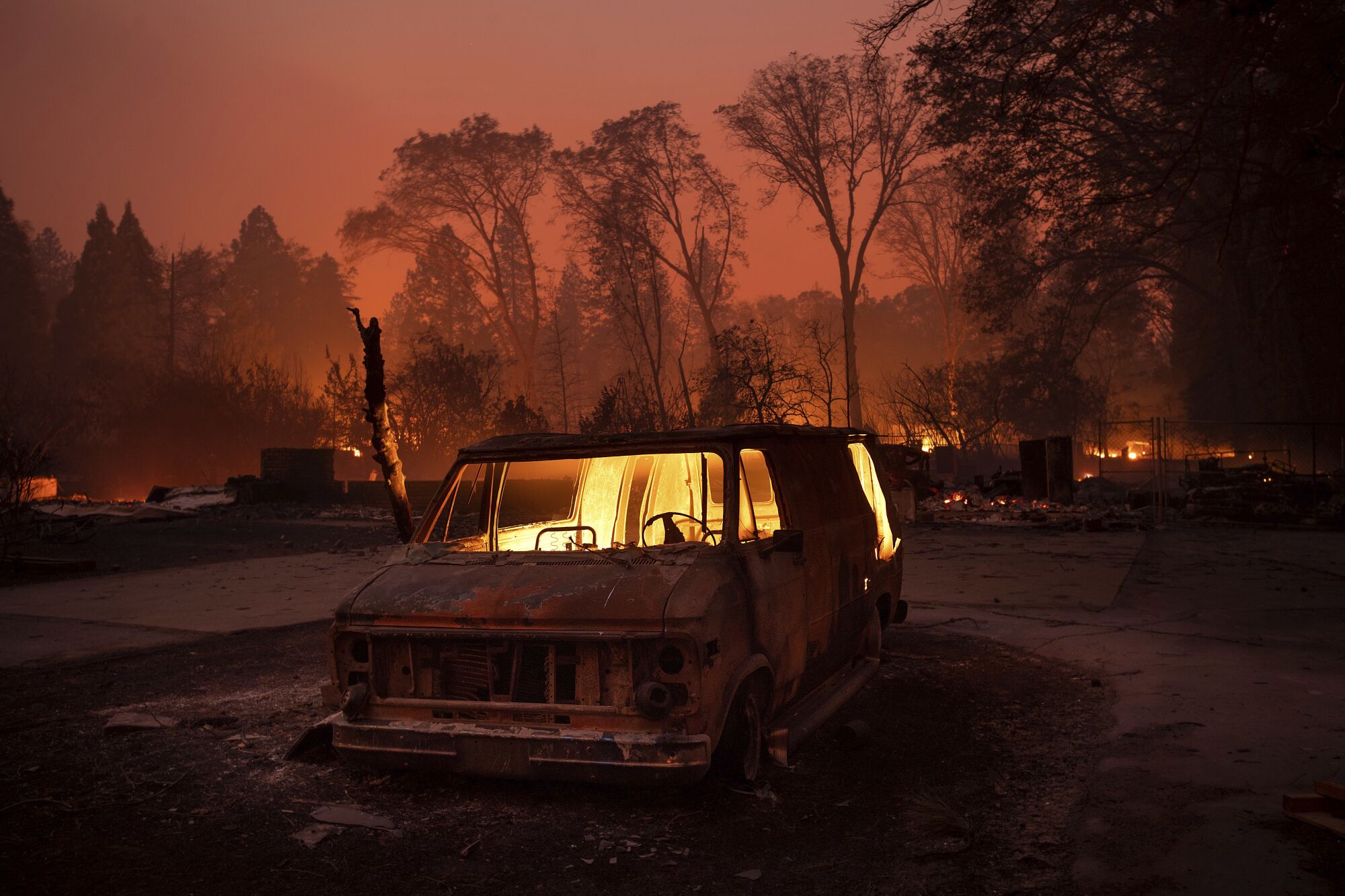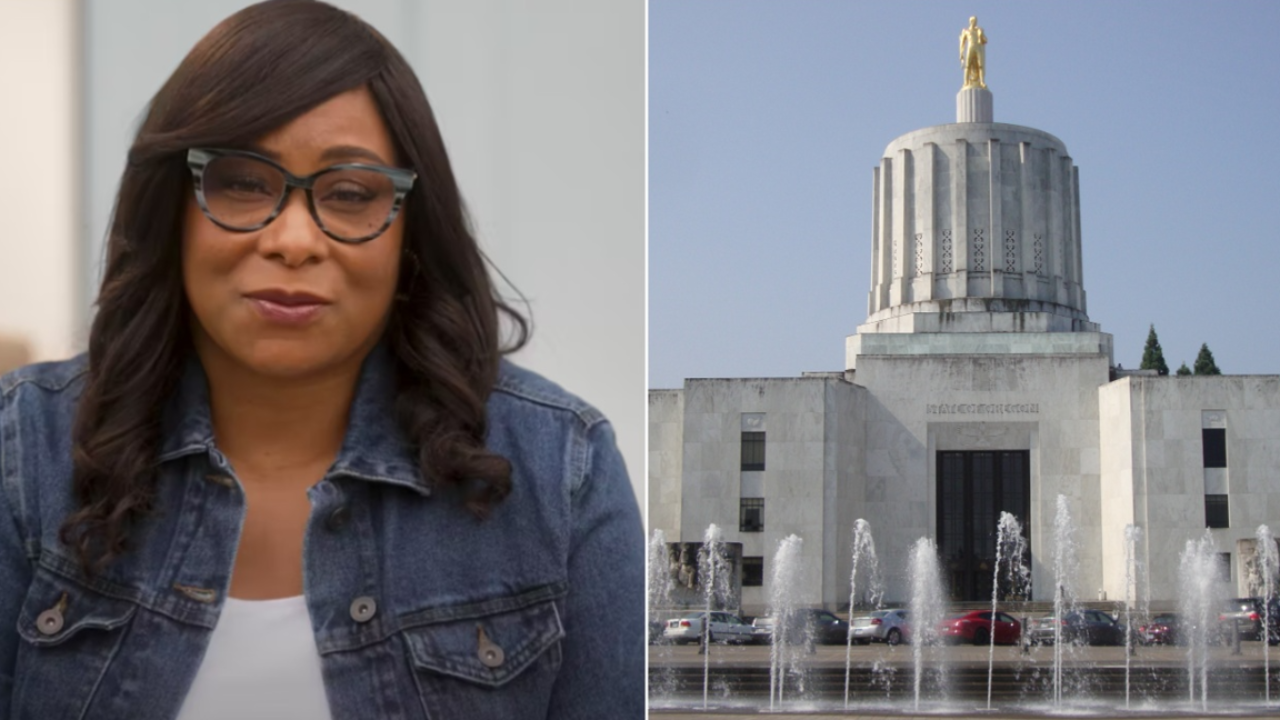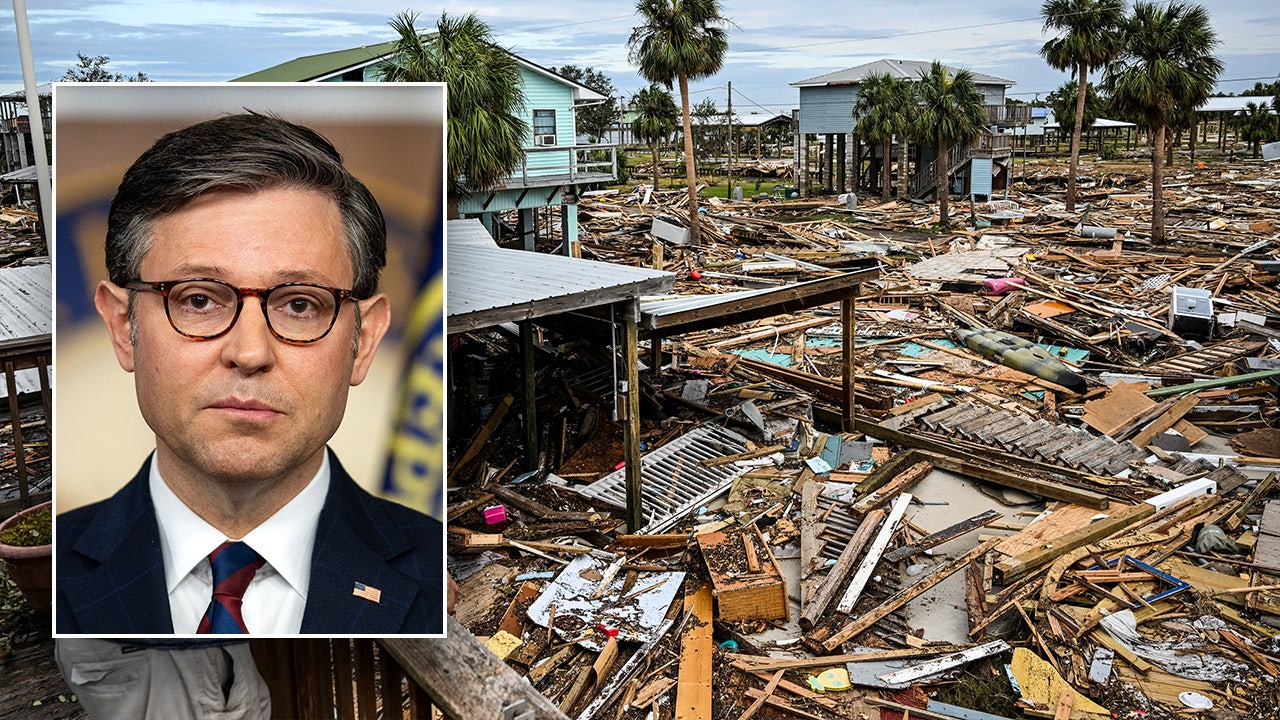Science
How climate scientists feel about seeing their dire predictions come true

You are correct. It is, in fact, extremely unusual to be on hurricane watch in Southern California.
If Hurricane Hilary continues on the trajectory forecasters are currently predicting, it will be the first tropical storm to make landfall in California since 1939, and only the second one to do so since the 19th century.
If this seems like a worrying development to you, one in a string of recent climate-related disasters that seem to portend the arrival of a deeply unpleasant future, you are right about that as well.
And the people who have spent careers thinking about climate change and its likely consequences, who have read the papers and reviewed the models and warned about these potential catastrophes for years — they’re worried too.
It’s been 35 years since an explicit reference to climate change first appeared on the front page of a U.S. newspaper, after James Hansen, then director of NASA’s Institute for Space Studies, testified before the Senate that “the greenhouse effect has been detected, and it is changing our climate now.”
In the decades since, the effects of climate change have loomed ominously in the distance like the due date of an unpayable mortgage.
But 35 years is enough time for a mortgage to come due, for children to grow up and have children of their own, and for the long-feared consequences of a warming world to become reality.
For climate scientists, it doesn’t feel good to be proved right.
“I used to think, ‘I’m concerned for my children and grandchildren.’ Now it’s to the point where I’m concerned about myself,” said Mike Flannigan, a professor of wildland fire at Thompson Rivers University in Edmonton, Canada.
The Times spoke with several researchers and climate experts about how the recent string of record-breaking, precedent-setting events feel to them. Their comments have been lightly edited for clarity.
‘There’s just too much’

Charles Johnson gulps down a third bottle of water on a extremely hot July day in Blythe, Calif.
(Irfan Khan/Los Angeles Times)
Daniel Swain is a UCLA climate scientist who studies how climate change affects extreme weather events.
This seemingly constant onslaught of extremes, unprecedented weather and climate events — yes, it is different.
Yes, extreme weather disasters happened previously. But we really are seeing a pretty dramatic escalation. It’s gotten less coverage, but the majority of the population of the northwest territories of Canada were evacuated last night [Wednesday] because all of the major settlements are threatened by separate fires. All of them.
It’s an example of how there is now so much going on that it is difficult even to digest it all. There’s just too much. It’s everything everywhere all at once when it comes to extreme climate events this year.
It’s everything everywhere all at once when it comes to extreme climate events this year.
— Daniel Swain, UCLA climate scientist
The amount of global warming we’ve seen is remarkably close to median projections for where we would be at this point. But is the increase in certain kinds of extreme events — and in particular the societal and ecological effects of those increasing extreme events — greater than had been predicted? It’s fair to say the answer is yes.
At this point, every unprecedented extreme heat event has a human fingerprint on it. It would be extraordinarily unlikely for a study to come out and say, “Oh, amazingly, this is a unique heat wave in that it wasn’t made worse by climate change.” Good luck with that. Same thing with really extreme precipitation events. And increasingly, in many places, the same thing is true for things like wildfires.

‘Climate change denial will cost us more and more lives’

A home collapsed onto a beach last year in Haleiwa, Hawaii, a victim of rising seas and more intense storms.
(Dan Dennison/Hawaii Department of Land and Natural Resources via Associated Press)
Craig Smith is an oceanographer at the University of Hawaii at Manoa. He specializes in deep–sea ecosystems, whose fragile natures and slow rates of recovery leave them particularly vulnerable to climate change.
All these climate-related catastrophes occurring in quick succession this year are extremely worrying! They drive home the point that climate-enhanced catastrophes are real and accelerating, heightening the need to reduce greenhouse gas emissions and adopt realistic mitigation strategies as quickly as we can.
These catastrophic events, such as the Lahaina fire, really drive home the monetary and human costs that will result from climate inaction. Delaying investments in sustainable energy and climate adaptation (such as coastal retreat in response to sea-level rise) is penny-wise but immensely pound-foolish. Climate change denial will cost us more and more lives.

‘We’re in uncharted territory. And that’s scary’

Flames burn inside a van during the Camp fire that tore through Paradise, Calif., in 2018.
(Noah Berger / Associated Press)
Mike Flannigan is a fire scientist at Thompson Rivers University.
Things are crazy. We’re in uncharted territory. And that’s scary. Frightening.
I’ve been doing this for over 40 years, and our models of temperature increases have been pretty darn good. But the impacts are more severe, frequent and intense than I expected. Things are happening, in terms of impact, much more rapidly than I expected.
It was always like, “Well, yes, I’m really worried about 30, 50 years from now.” Now, I’m worried about what’s going to happen next year, let alone the next 10 or 20 years.
I’m worried about what’s going to happen next year, let alone the next 10 or 20 years.
— Mike Flannigan, a fire scientist at Thompson Rivers University
I hope this year is a turning point, but I’ve been disappointed before. A colleague and I wrote a paper in the late ‘90s that said, “Urgent action is needed now to deal with climate change.” I still give talks and at the end I often say, “Urgent action is needed on climate change.” But I’m getting bloody tired of saying this, because we’re not doing enough.

‘Climate action should be viewed as an act of survival’

People in New York City take photos of the sun as smoke from wildfires in Canada engulfs the Northeast and Mid-Atlantic regions of the U.S.
(Angela Weiss / AFP via Getty Images)
Jonathan Parfrey is executive director of Climate Resolve, a Los Angeles nonprofit that works toward equitable climate solutions.
People are finally waking up to the reality of climate change. Unfortunately, due to the phenomenon of climate inertia — the massive additional energy that’s been absorbed by the oceans — the die is cast. Our future will grow even hotter.
Climate activism should not be considered an altruistic endeavor. Instead, climate action should be viewed as an act of survival, a necessity.
This moment is a strange mix of grief and hope. On the one hand, I know how precarious our situation is. On the other, we have the tools and ideas, if put into action, that can make a world of difference.

Science
The Tijuana River smells so bad, the CDC is coming to investigate

San Diego County residents will have an opportunity to share their pollution concerns about the Tijuana River when officials from the Centers for Disease Control and Prevention arrive later this month to conduct a health survey.
This is the first time that a federal agency is investigating the potential harm caused by millions of gallons of raw sewage pouring through the Tijuana River that have caused beach closures of more than 1,000 days. Residents living near the river say they have been suffering unexplained illnesses, including gastrointestinal issues and chronic breathing problems, because of the stench of hydrogen sulfide.
“We’re continuing to lean in and listen in on what our community residents are feeling,” said Dr. Seema Shah, the interim deputy public health officer with San Diego County. Supervisor Nora Vargas first wrote to the CDC back in May, formally asking the U.S. Department of Health and Human Services to look into the health complaints.
This week, the county began reaching out to thousands of residents to inform them that the CDC is coming in the hope that they will be more receptive to answering questions. “This is our chance to be able to communicate [pollution concerns] on a national level,” Shah added.
As part of what the CDC calls a Community Assessment for Public Health Emergency Response, 210 households will be surveyed about their mental and physical health, as well as the pollution’s effects on property values. The families will be randomly selected from 30 clusters of neighborhoods where San Diego County has identified air pollution complaints in the Tijuana River Valley.
Around 30 officials from the CDC and 50 graduate student volunteers from San Diego State University’s School of Public Health will be going door to door to conduct interviews with local residents over a three-day period. Here are the times when the survey will be conducted:
- Thursday, Oct. 17, 2024, from 2 p.m. to 7 p.m.
- Friday, Oct. 18, 2024, from 2 p.m. to 7 p.m.
- Saturday, Oct. 19, 2024, from 10 a.m. to 7 p.m.
The goal is to accommodate people’s schedules and, officials hope, catch them after work, Shah said. The volunteers are helping to bridge the language barriers with Spanish-speaking families.
“A lot of students, many of whom are bilingual, are from the community themselves,” said Paula Granados, an associate professor at San Diego State University’s School of Public Health, who’s been testing the Tijuana River for contaminants over the past month. “Our students are super excited. They want to help.”
The CDC could take weeks to months to release even the preliminary results from the survey, but for longtime residents like Bethany Case, this renewed attention already feels like a breath of hope.
“I just really want [this survey] to inform policy so that we don’t have to worry about our kids being sick,” said Case, the mother of two who’s lived in Imperial Beach for 16 years. For seven years she’s been an activist fighting to clean up the river as a volunteer with Surfrider, a nonprofit that works to preserve ocean access and cleanliness.
“I’m hoping that their survey shows that oftentimes it doesn’t just smell like sewage,” Case added. She doesn’t want the focus on the sewage to distract from the industrial waste that is dumped into the river that could be making people ill. “Oftentimes it smells like a chemical, it smells like a bite in the air, it burns your sinuses.”
Granados said the CDC’s survey is only a snapshot of what was going on when the data were collected, and conditions could worsen for residents when rainy seasons flood the river once more. Granados wants residents to know that even if they aren’t picked to respond to this survey, SDSU will be conducting its own yearlong survey that they can answer multiple times at tjriver.sdsu.edu.
“There’s research that’s still ongoing,” Granados said, and all that data will help policy decisions in the future. “We’re just committed to the long haul, whatever it takes to support the community.”
The county and other federal and state representatives have been working to raise awareness around the pollution to a national level.
Next week, the San Diego County Board of Supervisors will consider a proposal by Supervisor Terra Lawson-Remer to petition the Environmental Protection Agency to label the Tijuana River a Superfund site in need of remediation.
Science
'More serious than we had hoped': Bird flu deaths mount among California dairy cows

As California struggles to contain an increasing number of H5N1 bird flu outbreaks at Central Valley dairy farms, veterinary experts and industry observers are voicing concern that the number of cattle deaths is far higher than anticipated.
Although dairy operators had been told to expect a mortality rate of less than 2%, preliminary reports suggest that between 10% and 15% of infected cattle are dying, according to veterinarians and dairy farmers.
“I was shocked the first time I encountered it in one of my herds,” said Maxwell Beal, a Central Valley-based veterinarian who has been treating infected herds in California since late August. “It was just like, wow. Production-wise, this is a lot more serious than than we had hoped. And health-wise, it’s a lot more serious than we had been led to believe.”
A total of 56 California dairy farms have reported bird flu outbreaks. At the same time, state health officials have reported two suspected cases of H5N1 infections among dairy workers in Tulare County, the largest dairy-producing county in the nation. With more than 600,000 dairy cows, the county accounts for roughly 30% of the state’s milk production.
Beal’s observations were confirmed by others during a Sept. 26 webinar for dairy farmers that was hosted by the California Dairy Quality Assurance Program — an arm of the industry-funded California Dairy Research Foundation. A summary of the findings and observations was reported in a newsletter published earlier this week by the program.
Beal, along with Murray Minnema, another Central Valley veterinarian, and Jason Lombard, a Colorado State University veterinarian, described their observations and data to dairy farmers to help them anticipate the signs of, and treatments for, the virus.
The webcast was not made available to The Times.
“The animals really don’t do well,” Beal told The Times.
He said the infected cows he has seen are not dissimilar to people who are suffering from a typical flu: “They don’t look so hot.”
He and others think the recent heat may be a factor.
Since the end of August, the Central Valley has suffered multiple heat waves, with daytime temperatures exceeding 100 degrees.
“Heat stress is always a problem in dairy cattle here in California,” he said. “So you take that, you add in this virus, which does have some affinity for the respiratory tract … we always see a little bit of snotty noses and heavy breathing in animals that are affected … and for some of them, just the stress takes them.”
Indeed, most of the deaths are not directly the result of the virus, he said, but are “virus adjacent.” For instance, he has seen a lot of bacterial pneumonia, which is likely the result of the cow’s depressed immune system, as well as bloat.
He said that when the cows aren’t feeling well, they often don’t eat.
“The digestive tract, or rumen, basically requires movement. There has to be things moving out of that rumen constantly in order for the pH balance and microbiome to stay where it should be,” he said. So, when they’re not eating, things in the digestive tract stagnate.
That, in turn, causes them to “asphyxiate because their diaphragm has too much pressure on it.”
In addition, he and others are seeing a lot of variation in the duration of illness.
While early reports had suggested the virus seemed mild and lasted only about a week or two, others are seeing it last several weeks. According to the industry newsletter, at one dairy, cows were shedding virus 14 days before they showed clinical signs of illness. It then took another three weeks for the cows to get rid of the virus.
They’re also noticing the virus is affecting larger percentages of herds — in some cases 50%-60% of the animals. This is much more than the 10% that had been previously reported.
Some say the actual rate may be even higher.
“I would speculate infection is even higher; 50-60% are showing clinical signs due to heat stress or better herd monitoring earlier in infection. Unfortunately, few or no herds have been assessed retrospectively through serology testing to determine actual infection rates,” said John Korslund, a retired U.S. Department of Agriculture veterinarian epidemiologist.
Cows are also not returning to 100% production after they’ve cleared the virus, said Beal. Instead, he and others say it’s closer to 60%-70%.
“There’s going to be some animals that are removed from the herd, because they never seem to come back,” he said.
Beal said his firsthand observations have really challenged his notions about the disease, which has so often been described as mild and insignificant.
“Once I saw it myself, I said, this is something I need to communicate with my clients about … this is not something that is just a joke at the dinner table,” he said. “I didn’t want people to not take it seriously, because I see what it is doing to the animals, and it is rough to see — as an animal caretaker, as a veterinarian like myself — it’s just not something that’s enjoyable. It’s more serious than we had been led to believe.”
He said he is working hard with Central Valley farmers to treat the animals — largely by making sure the cattle are adequately hydrated. He also treats sick cows with a medication similar to aspirin, to reduce fever, pain and discomfort.
He said the treatment is pretty effective, and seems to be helping.
Others are not surprised H5N1 is becoming more severe in cows.
“As I’ve said since we first learned of the outbreak in dairy cows, nothing we’ve learned about this virus is new or unexpected,” said Rick Bright, a virologist and former head of the U.S. Biomedical Advanced Research and Development Authority. “It’s behaving exactly as we’ve come to know of this virus over the past 25 years. It’s spreading very efficiently now among mammals, and it’s mutating and adapting to mammals as it does.”
He credited state health officials and veterinarian for “being more forthcoming and transparent with their data” than other states, and said this may be the reason the virus seems to be hitting California cows so hard.
“This virus is out of control. It is time for urgent and serious leadership and action to halt further transmission and mutation,” Bright said. “The concept of letting it burn out through food animals, with unmonitored voluntary testing, has failed. There are pandemic playbooks that we need to dust off and begin to implement.”
In the meantime, officials continue to reassure the public about the safety of the nation’s dairy supply. They say pasteurization inactivates the virus. They also warn people to stay away from raw milk.
Beal noted one of the sentinel signs that a farm has been infected is dead barn cats that have drunk the infected, raw milk.
“It’s weird, actually, how consistently that seems to be happening everywhere,” he said. “It’s pretty sad and shocking. But that’s one of the first things that people see sometimes.”
There is also some suggestion that some cows that have recovered from the virus have been reinfected, although this has not been confirmed.
“We don’t have any data to support this yet, but there have been anecdotal reports of reinfections in herds,” said Kay Russo, a dairy-poultry vet with RSM Consulting, an international consulting firm.
She said it could just be a persistent infection that is being observed, but also speculated that the virus could be mutating rapidly — and evolving “enough to reinfect an animal.”
And Jason Lombard, one of the speakers at the dairy webinar, said in an email that he had been told by veterinarians that they are observing clinical signs of disease in animals that had been infected, “but I don’t believe any of them have been confirmed via testing.”
As of Oct. 4, California officials have reported 56 infected herds. Although state officials will not disclose the location of these herds, the Valley Veterinarians Inc. website — a veterinary clinic run by large-animal vets in the Central Valley — said the infections are in Tulare and Fresno counties.
Steve Lyle, a California Department of Food and Agriculture spokesman, would not confirm the counties.
There are more than 200 herds in Tulare County and more than 100 in Fresno County. The state’s largest raw milk dairy is also in Fresno County.
Requests by The Times to observe infected farms or speak with the owners of infected dairies went unanswered by the state and declined by industry insiders.
“We are not recommending farmers engage on this due to farm security issues we’ve had,” said Anja Raudabaugh, chief executive officer of Western United Dairies, an industry trade group for California dairy farmers. “It is very unwise to consider viewing a dairy under quarantine … this is just not the time.”
She said her organization doesn’t want anyone “doxing” farmers or increasing traffic at or near a farm, “both of which have happened.”
In the last week, the H5N1 virus has been detected in wastewater samples collected in Turlock, San Francisco, Sunnyvale and Palo Alto.
State epidemiologist Erica Pan said it was hard to know where the virus is coming from. While Turlock is a dairy center, the hits in the Bay Area cities could potentially be from wild birds, she said, but the source is not known.
Science
Opinion: The evidence shows women make better doctors. So why do men still dominate medicine?

“When will I see the doctor?” Most female doctors have been asked this question many times. It feels like a slight — a failure to recognize the struggle it took to get to where they are, a fight that is far from over once a woman has her medical degree.
Women now make up more than half of medical students but only about 37% of practicing doctors. That is partly because the makeup of the medical workforce lags that of the student body. But it’s also because persistent sexism drives higher attrition among women in medicine.
Even in households headed by a mother and father who both work, the woman is frequently expected to be the primary caretaker. As a result, female physicians often feel forced to work part time, choose lower-paying specialties such as pediatrics or leave the profession altogether.
That’s unfortunate not just for doctors but also for patients. On the whole, female doctors are more empathetic, detail-oriented and likely to follow through than their male counterparts. In other words, they are better doctors.
Admittedly, that is a generalization, but it’s one worth making. I experienced it firsthand working with female colleagues, and I’m informed by that experience in addressing my own medical needs. I prefer to see female doctors.
It wasn’t always that way. But after seeing a series of male doctors who were not listening to me, in a hurry to get out of the exam room or appearing only mildly interested in figuring out the cause of my problem, I made the switch — and I’m not going back. While I found that male doctors typically decided what my diagnosis was and how to treat it before entering the exam room, female doctors tended to be open-minded about what my medical issues were and — gasp! — listen to my answers to their questions.
But don’t take my word for it. Look at the data.
One recent study found that both female and male patients had lower mortality rates when they were treated by female physicians. Perhaps not surprisingly, the benefits of getting care from women were greater for women than for men.
“What our findings indicate is that female and male physicians practice medicine differently, and these differences have a meaningful impact on patients’ health outcomes,” said Yusuke Tsugawa, a senior author of the study.
Female doctors seem more likely to discover the root cause of a medical problem, as we are taught to do in medical school, rather than merely treat the symptoms.
“Female physicians spend more time with patients and spend more time engaging in shared medical decision-making,” Dr. Lisa Rotenstein, a co-author of the study, told Medical News Today. “Evidence from the outpatient setting demonstrates that female physicians spend more time on the electronic health record than male counterparts and deliver higher-quality care. In the surgical realm, female physicians spend longer on a surgical procedure and have lower rates of postoperative readmissions. We need to be asking ourselves how to provide the training and incentives so that all doctors can emulate the care provided by female physicians.”
One reason for the discrepancy might be male doctors’ propensity to be more ego-driven. They may revert to “mansplaining” to patients instead of engaging in an equal, cooperative patient-physician relationship. I’ve been guilty of that myself, so I know it when I see it.
What’s blocking women’s advancement in medicine? Old-fashioned sexism in the workplace is the most obvious answer. Female doctors are paid 25% less than their male counterparts on average, according to the 2019 Medscape Physician Compensation Report, earning an estimated $2 million less over a 40-year career.
There is also a power imbalance. Men are more likely to be full professors at medical schools and presidents of professional medical associations. A 2019 survey found that women oncologists were less likely than their male counterparts to attend scientific meetings because of child care and other demands. And anyone in medicine will attest that these conferences provide opportunities to angle for leadership positions.
Excluding women from leadership deprives young female doctors of role models. While I haven’t seen female doctors being asked to get coffee for their male colleagues (though I have seen women nurses asked to do so, even recently), the unequal distribution of responsibilities is undeniable. Female physicians are often overburdened with menial, uncompensated assignments, secretarial tasks and committee service that does not necessarily lead to promotions, taking precious time away from activities that would be more likely to advance their careers.
These and other factors lead to higher burnout rates among women physicians. A 2022 American Medical Assn. survey found that 57% of female physicians reported suffering at least one symptom of burnout, compared with 47% of men.
“Women physicians are paid less than men, work harder, have less resources, are less likely to be promoted and receive less respect in the workplace,” Roberta Gebhard, a former president of the American Medical Women’s Association, told the Hill. “With all of these barriers to success in the workplace … it’s no wonder that women physicians are more likely to stop practicing than men.”
The patriarchal system is alive and well in medicine, and it isn’t helping our patients. We must address this antiquated disparity. It is incumbent on medical institutions to champion female physicians, not only as rank-and-file doctors but also as leaders of the profession and its organizations. Patients should also examine their own assumptions and challenge the notion that seeing a male doctor will yield better results.
It’s time for doctors to live up to one of the highest ideals of medicine: that all people should be treated equally. That includes female physicians.
David Weill is a physician, a former director of Stanford’s Center for Advanced Lung Disease, the principal of the Weill Consulting Group and the author, most recently, of “All That Really Matters.”
-
/cdn.vox-cdn.com/uploads/chorus_asset/file/25439572/VRG_TEC_Textless.jpg)
/cdn.vox-cdn.com/uploads/chorus_asset/file/25439572/VRG_TEC_Textless.jpg) Technology3 days ago
Technology3 days agoCharter will offer Peacock for free with some cable subscriptions next year
-

 World2 days ago
World2 days agoUkrainian stronghold Vuhledar falls to Russian offensive after two years of bombardment
-

 World3 days ago
World3 days agoWikiLeaks’ Julian Assange says he pleaded ‘guilty to journalism’ in order to be freed
-

 Technology2 days ago
Technology2 days agoBeware of fraudsters posing as government officials trying to steal your cash
-

 Virginia4 days ago
Virginia4 days agoStatus for Daniels and Green still uncertain for this week against Virginia Tech; Reuben done for season
-

 Sports1 day ago
Sports1 day agoFreddie Freeman says his ankle sprain is worst injury he's ever tried to play through
-

 Politics1 week ago
Politics1 week agoMaryland Senate race: Democrat Alsobrooks leads Republican Hogan in closely watched contest
-

 Health12 hours ago
Health12 hours agoHealth, happiness and helping others are vital parts of free and responsible society, Founding Fathers taught














